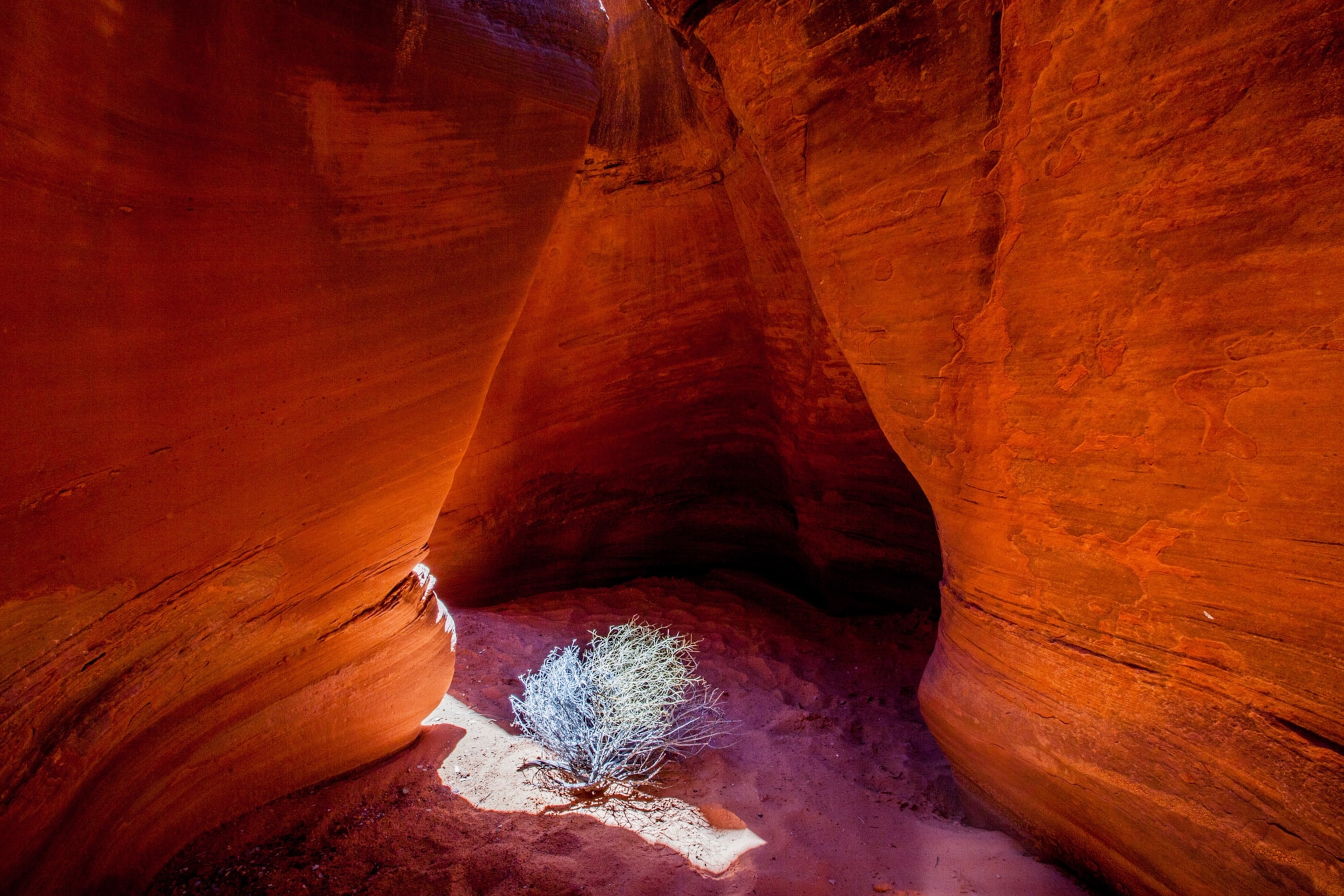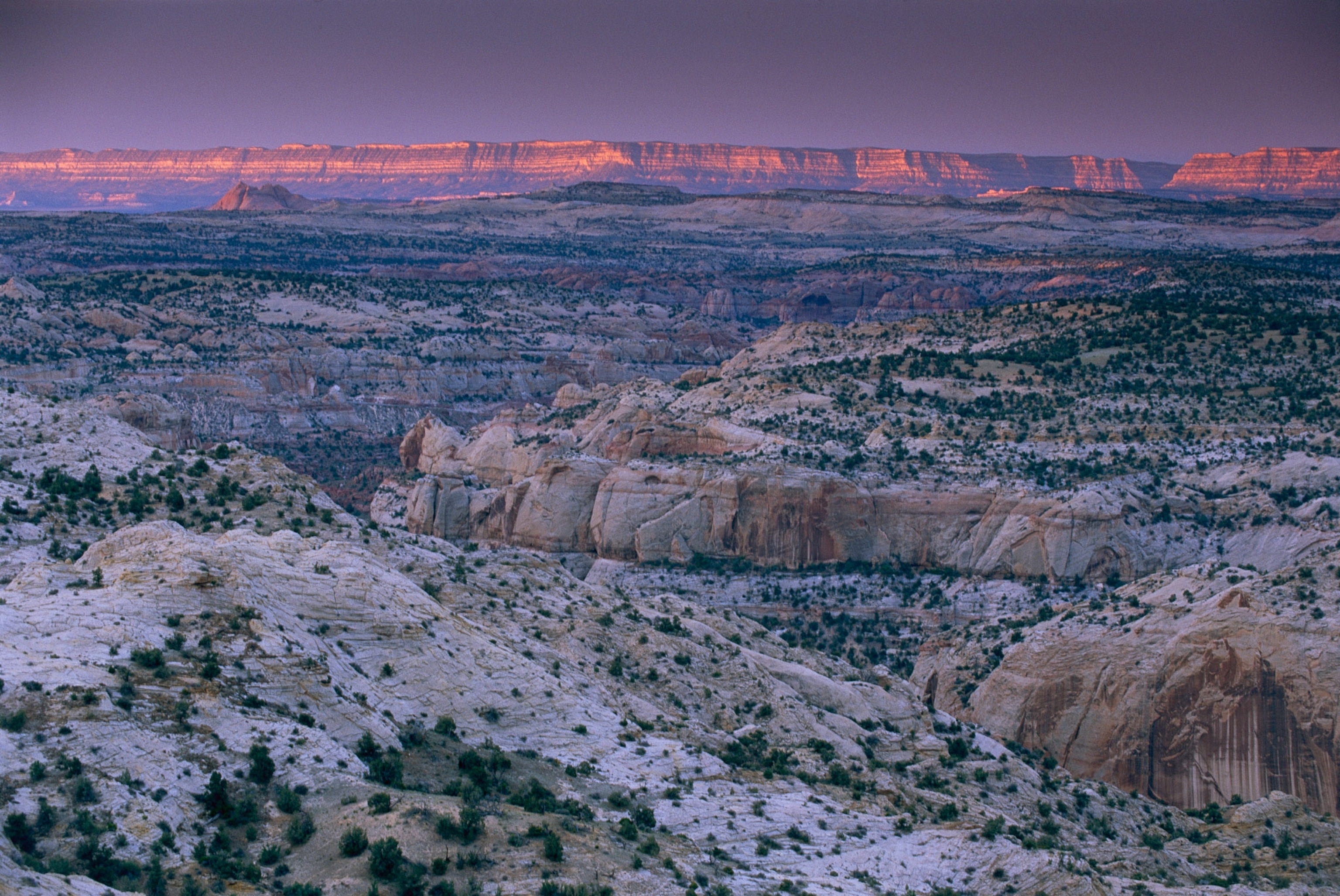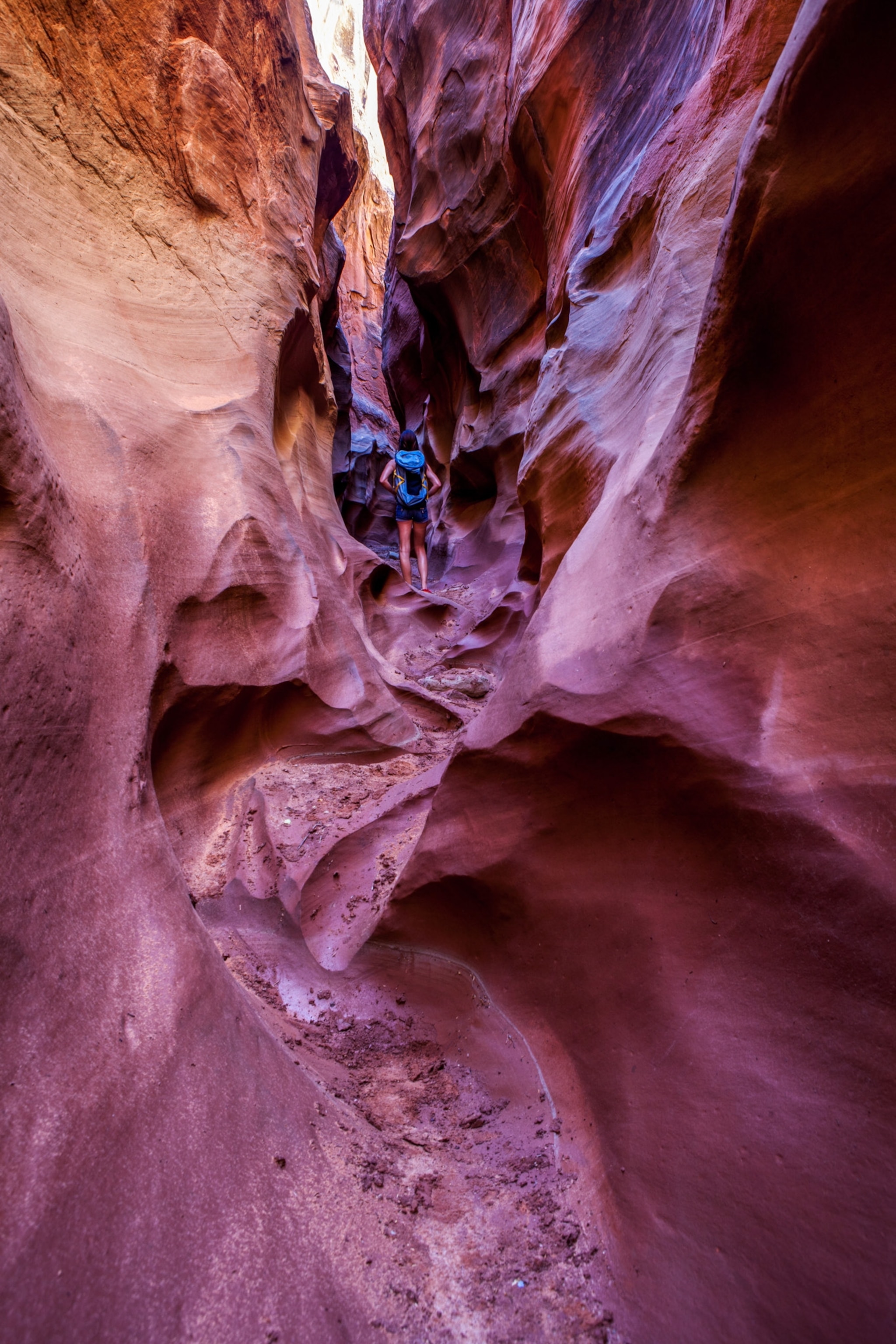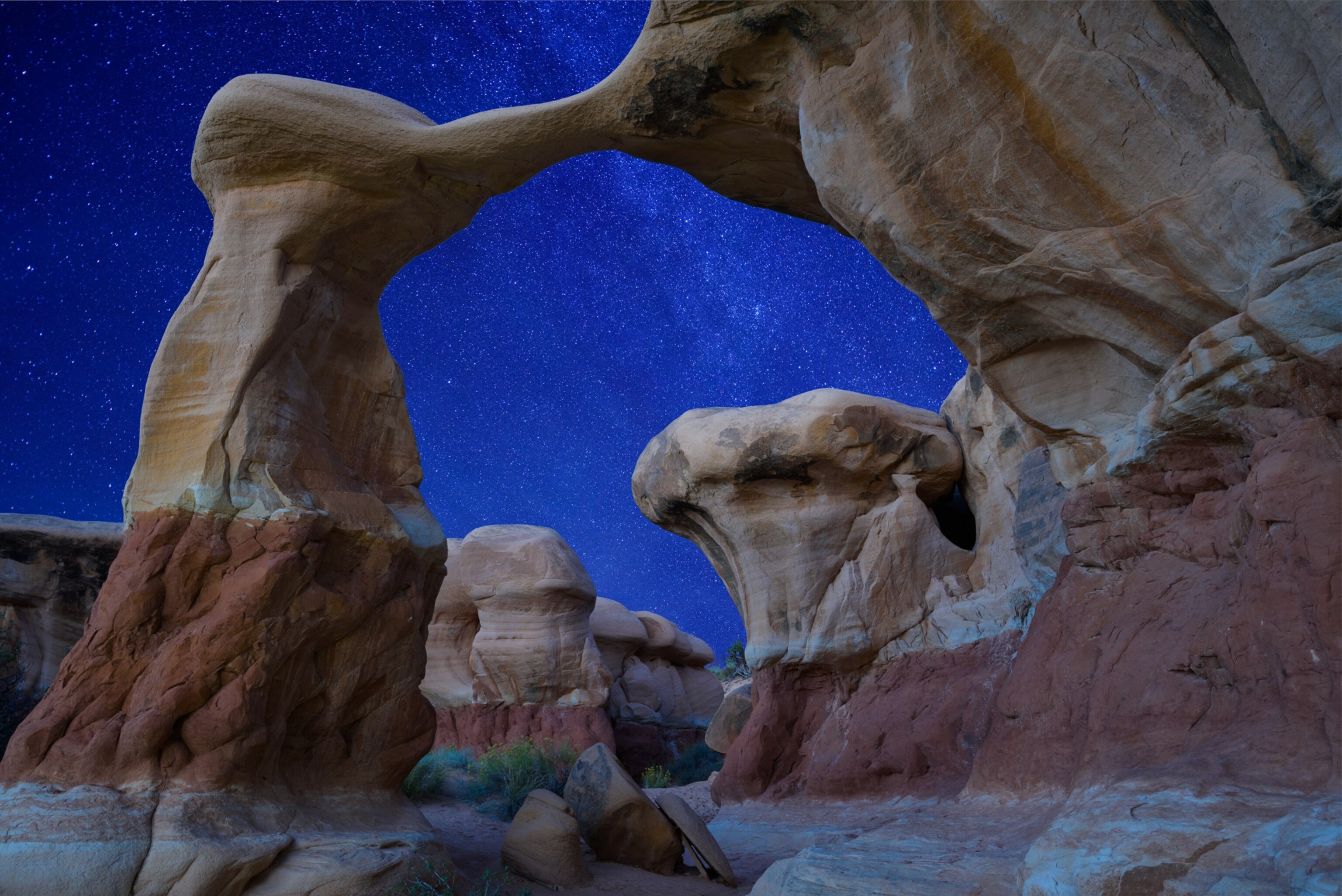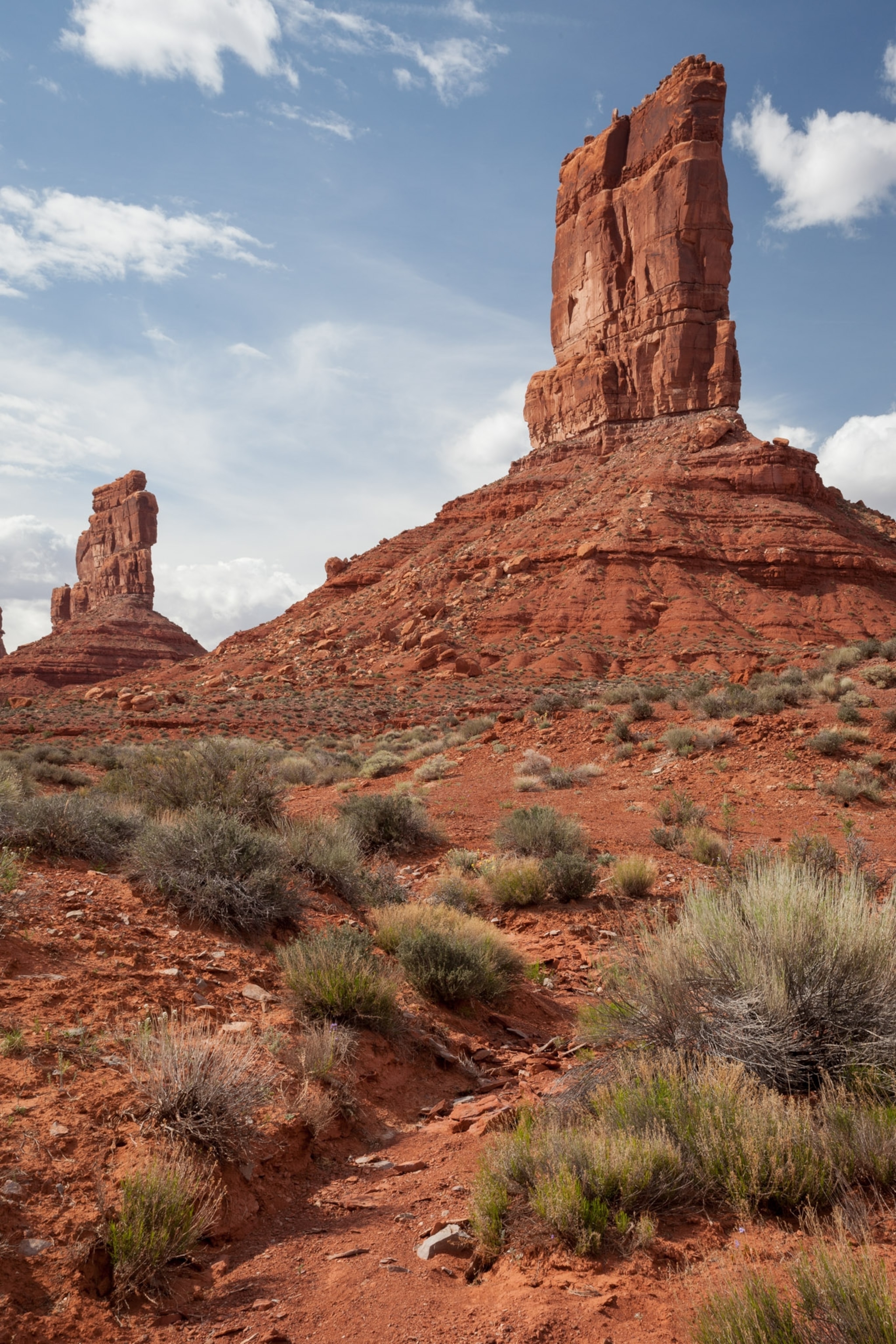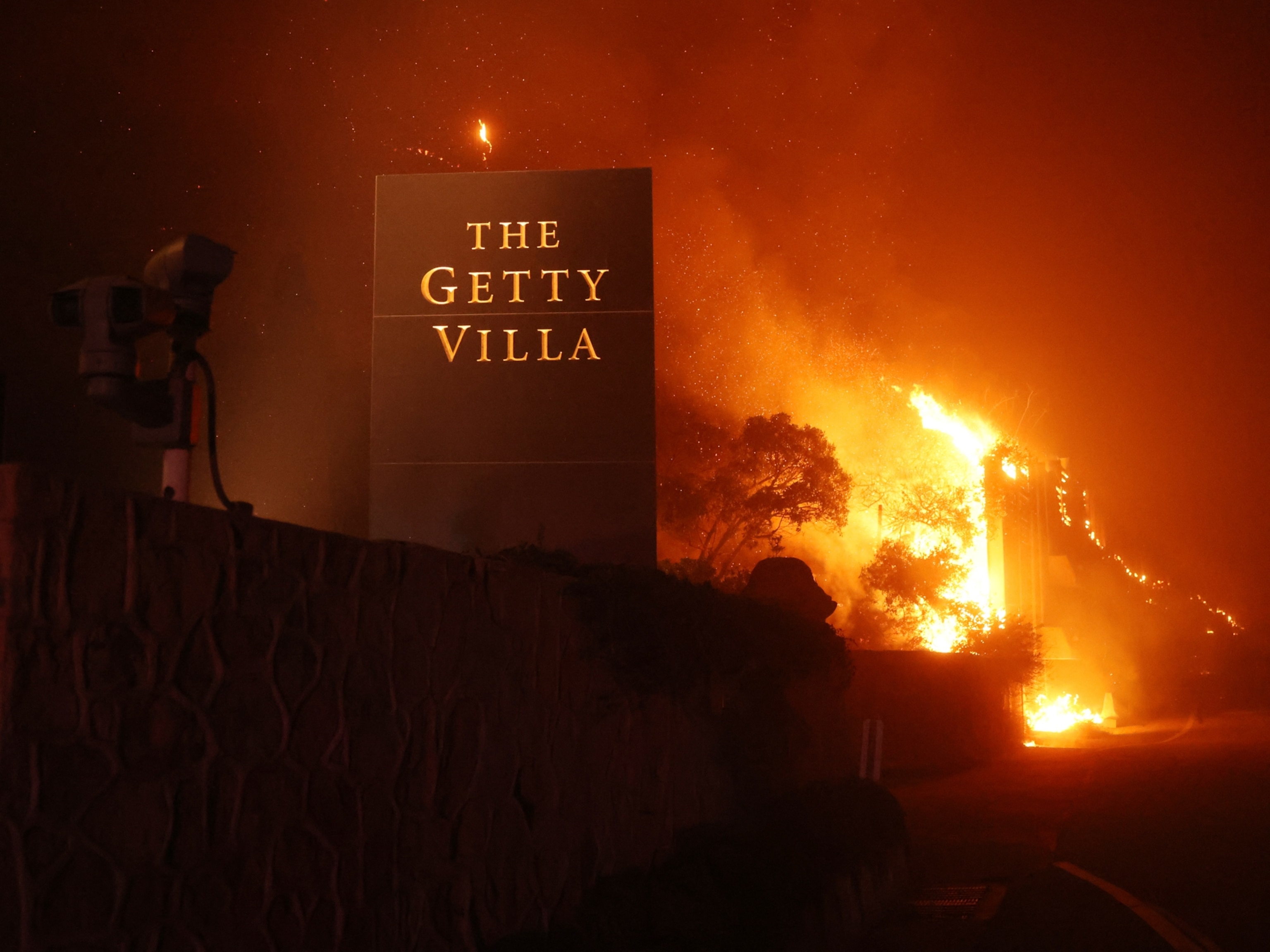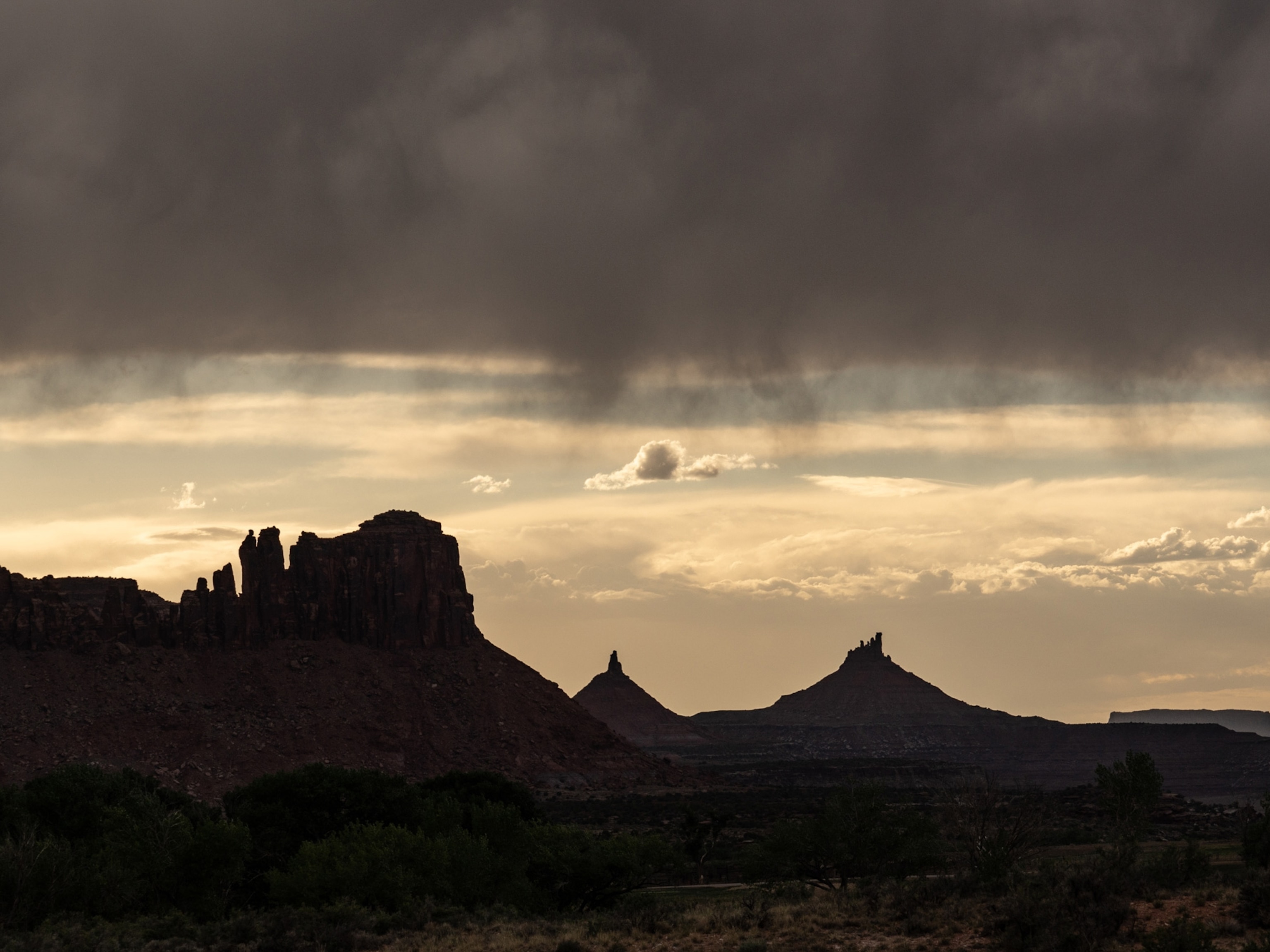What You Need to Know About Trump’s National Monument Rethink
Trump questions presidential authority to “lock up land”—but can he really rescind federal monuments?
Utah has 13 national parks and monuments, most set in spectacular red-rock formations that make it the envy of tourist bureaus everywhere. But the day after Donald Trump’s inauguration, Utah’s four congressmen and two U.S. senators asked the president to abolish the newest of these chiseled landscapes to be preserved—the Bears Ears National Monument created by Barack Obama in the final days of his administration.
Wednesday, Trump took the first step toward that end—and then some.
In a sweeping executive order with few precedents, Trump instructed Interior Secretary Ryan Zinke to review as many as 40 national monuments created over the past 21 years to determine if any of his three predecessors exceeded their authority in setting aside large tracts beyond the land that needed protection. The review is targeted on monuments that are at least 100,000 acres in size and reaches back to 1996, midway through the Clinton administration, when Bill Clinton’s creation of the 1.7-million-acre Grand Staircase-Escalante National Monument in southern Utah stirred such fury that opponents still search for ways to shrink it two decades later.
Trump, in remarks at the Interior Department, characterized the creation of national monuments by Obama as “an egregious abuse of power” and suggested the review could result in turning some federal lands, or monuments, back over to the states.
“I’ve spoken with many state and local leaders … who care very much about conserving land and are gravely concerned about this massive federal land grab,” he said. “And it’s gotten worse and worse and worse and now we’re going to free it up. It never should have happened. I am signing this order to end abuses and return control to the people.”
Even in the face of Trump’s frenetic efforts to erase other parts of Obama’s legacy on multiple policy fronts, his call for “ending abuse of monument designation” stands out. No president has ever revoked a national monument named by a predecessor. No president has ever tried.
Doing away with or significantly shrinking any national monument would invite a court challenge over presidential powers—and further inflame the long-running dispute over public lands that dates to the settlement of the American West.
“We will be ready, absolutely, see you in court,” says Randi Spivak, a spokeswoman for the Center for Biological Diversity in Tucson, Ariz., one of multiple groups that drew up legal papers weeks ago to defend monuments.
Conservative lawmakers have long argued that the federal government, which owns almost half the land in 11 western states in the continental United States, should turn control of much of it over to the states—or sell off parcels for commercial development and the allure of new jobs.
National monuments come under fire from critics as “land grabs,” although the land being “grabbed” is already owned by the federal government. They are also derided as “midnight monuments,” for the tendency of presidents to create them in the waning days of their presidencies.
Lyndon Johnson holds the record in that regard, for having expanded Utah’s Arches National Monument in the final 90 minutes of his term—although Clinton managed to infuriate Utah’s congressional delegation by keeping his creation of the Grand Staircase, which locked up a rich vein of coal in the Kaiparowits Plateau, under wraps until it was too late. The congressmen learned about it not from the White House, but by reading the newspaper.
Anti-federalist sentiment is especially vocal in Utah, where the federal government owns 63 percent of the land. The creation of Bears Ears was seen by some as an insult to working folks trying to make a living in hardscrabble rural reaches like San Juan County, which contains part of the eastern section of Bears Ears. It is Utah’s poorest county and has not voted for a Democrat for president since Franklin Roosevelt.
Utah’s congressmen denounced Bears Ears as “a slap in the face” and “a travesty.” Rep. Rob Bishop, chairman of the House Natural Resources Committee, promised, in a website video, “We will fight to right this wrong.”
That includes, he added, rolling back the 111-year-old law that grants presidents the authority to create monuments.
“These are very popular places,” says Brad Sewell, a senior lawyer with the Natural Resources Defense Council, a nonprofit environmental organization. “Many of our national parks started as national monuments. Even in Utah, where a fair amount of opposition is brewing in certain quarters, the public at large is in favor of national monuments.”
Antiquities Act Gives President Broad Powers
The presidential power to create national monuments on federal lands flows from the Antiquities Act, signed into law in 1906 by President Theodore Roosevelt. Congress gave broad discretion to set aside “historic landmarks … and other objects of historic and scientific interest.”
Roosevelt, whose legacy as a conservationist is often heralded, took full advantage. Within three months, he created Devil’s Tower in Wyoming as the first national monument. He went on to create 17 additional national monuments in nine states, including the Grand Canyon, which Congress upgraded to a national park in 1919.
Every president since, except Ronald Reagan, has used the law to set aside land to be preserved in national monuments—more than 120 in all. Obama created 34 national monuments, more than any other president, conserving more than 550 million acres on federal land or in federal waters.
Disagreement over the Antiquities Act’s intent lies in its simplicity. The four-paragraph law clearly states that the president is authorized to “declare” national monuments. But the law says nothing about the presidential authority to do the reverse.
“The Antiquities Act does not provide for rescinding a national monument,” says Robert Keiter, director of the University of Utah’s Wallace Stegner Center, and a specialist in public lands law. “The courts have not ruled on whether there is an implied power in the statute. The issue has never been litigated previously.”
Numerous Attorney General opinions argue that the president lacks the power to revoke, most notably one authored by President Franklin Roosevelt’s attorney general in 1938. When FDR inquired if the Antiquities Act allowed him to scuttle a derelict Civil War-era fort in Charleston, South Carolina, as a national monument, he was advised it did not. Successive administrations heeded that advice.
Presidents have downsized about 20 monuments, most with minor adjustments. The exception is the 639,000-acre Mount Olympus National Monument, created by Theodore Roosevelt in 1909 and cut in half by Woodrow Wilson in 1915 to keep a supply of timber flowing to build Navy ships for World War I. None of the resizings were challenged in court, so that question has yet to be tested.
Outrage and Protest
It would be a mistake to conclude that the controversy engulfing Bears Ears cries out for a dramatic change. The dispute represents neither a shift in either the nation’s warm embrace of national monuments nor the contentious politics associated with their birth. The history of national monuments is replete with friction and strife, starting with the litigation over creation of the Grand Canyon National Monument, now one of the most popular tourist destinations in the world.
In 1907, opposing mining interests argued the monument was simply too large and violated a clause of the Antiquities Act that limits monuments to "the smallest area compatible with ... the objects to be protected." Trump seized on that phrase in alleging presidential abuse even though the Supreme Court found that Theodore Roosevelt indeed had authority to create a monument of such vast size. William Randolph Hearst complicated the politics further as the Grand Canyon was about to become a national park, requiring a provision to be tacked on preventing construction of any structures between the newspaper magnate’s property and the canyon rim that might block his view.
Franklin Roosevelt created Grand Teton National Monument from 35,000 acres of ranchland secretly purchased by John D. Rockefeller, a move that ignited such political blowback from Wyoming ranchers that the Antiquities Act was amended to exclude Wyoming from ever having another national monument.
Despite the machinations, the public largely supports even the most controversial monuments—one reason why Congress, which has clear authority to abolish national monuments, rarely does. It has revoked a handful of monuments, including, in 1955, the South Carolina fort that so pained FDR. More often, Congress has turned national monuments into national parks—more than 30 so far, including Joshua Tree in California, Denali in Alaska, and Olympic in Washington state. Four of Utah’s “Big Five” national parks—Arches, Bryce, Zion and Capitol Reef—began as monuments.
Bears Ears was created by Obama last December at the request of five Native American tribes that spent six years in public meetings developing the plan.
The monument is named for the twin buttes that jut above a horizon of red-rock formations, with both high mountain peaks and sandstone canyons. The area is so remote it was one of the last in the continental United States to be mapped.
Bears Ears National Monument now also protects thousands of cultural and archaeological sites containing tribal artifacts that were vulnerable to looting. The tribes asked that the monument include 1.9 million acres. Obama reduced it to 1.35 million, about the same size of a state plan to protect tribal artifacts that the Utah delegation supported.
Backlash Builds
Some view Trump’s broad review of two decades of monuments as a thinly disguised effort to take aim at just two: the Grand Staircase-Escalante and Bears Ears. Congress has already adjusted the size of the Grand Staircase, codifying the new boundaries in law—something that could make it difficult for Trump to wipe away with the flick of his pen.
“You can bet the mortgage that the administration’s review will turn out to be a show trial where the verdict is pre-determined: monuments are bad for local economies, are opposed by local interests and ought to be overturned and shrunk,” says Tom Kenworthy, board chairman of the Southern Utah Wilderness Alliance, based in Moab. “In fact, the opposite is true. The Grand Staircase, for example, now enjoys strong support of local business leaders.”
On Monday, Sen. Orrin Hatch thanked Trump for the review, though he left little doubt about his expectations for the outcome. In a speech on the Senate floor, Utah’s senior senator, a Republican, said he had been working closely with the Trump administration “from day one to right the wrongs of the previous administration.”
Hatch praised Trump as committed to defending the Western way of life, and added: “I was encouraged that—unlike his predecessor—President Trump actually took the time to listen and understand the heavy toll of such overreaching actions…. I am deeply grateful for his willingness to work with us to undo the harm caused by the overreach of his predecessors.”
Although the Utah delegation has Trump’s ear for now, the election also reinvigorated supporters of public lands, including a coalition of unnatural allies: environmentalists, sportsmen, and business leaders who want public lands protected and are speaking out. In Montana, Zinke’s home state, the governor’s race was largely decided by a debate over the value of protecting public lands. Gov. Steve Bullock, a Democrat, was reelected after casting his Republican opponent as caving to mining and grazing interests.
In Utah, where tourism is the state’s largest “exported” industry, bringing in $8 billion in visitor dollars, the politicians’ tough stand against Bears Ears has come with costly consequences. In protest, the Outdoor Industry Association pulled its twice-yearly trade show from Salt Lake City, where it has been held for the past 20 years—a move that costs Utah $45 million.
Earlier this year, Utah Rep. Jason Chaffetz got an eye-opening lesson from defenders of public lands after he introduced a bill that would have ordered the Interior Department to sell off 3.3 million acres of public land. The backlash against it was so swift and ferocious that he withdrew the bill a week later.
He wrote on Instagram that he’d pulled his bill because he feared it “sent the wrong message.”
But he added, “This fight is far from over.”
Now it’s up to Trump.

